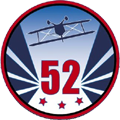Biplanes
Biplanes are popular in all but the highest category of aerobatic
competition. Most of the biplanes you will find at a regional contest
such as the Kathy Jaffe Challenge were designed by one man, Curtis
Pitts, and are generically referred to as “Pitts Specials.”
The wing construction uses wooden spars and ribs with steel wire
reinforcements all covered with fabric. The fuselage is welded steel
tubing. The fuselage from the engine to the cockpit has sheet-metal
covering. The remainder of the fuselage and tail has fabric covering.
Monoplanes
While the Pitts dominated aerobatics in the 1960’s, world class
aerobatics is now dominated by high-performance monoplanes.
There are many different monoplane models. Some of their names
are, Sukhoi, Yak, Zlin, Extra, Cap, Edge, and Giles. Most have a
welded steel tubing fuselage. Some use fabric covering; some use
sheet steel. The latest models use lightweight carbon composite
material.
Pitch, Roll, and Yaw
Most airplanes, and all airplanes in aerobatic competitions, are
controllable in three dimensions. The names of the three
dimensions are “pitch,” “roll,” and “yaw.”
Pitch is motion of the airplane’s nose up and down. An airplane will
generally climb as the nose (pitch) goes up and descend as the nose
(pitch) goes down.
When an airplane rolls the wingtips move up and down.
Yaw is motion of the airplane’s nose side-to side.
An airplane turns by coordinated use of pitch, roll, and yaw. An
airplane that has rolled into a turn is sometimes described as being
“in a bank,” or “banked,” as if following a banked, high speed curve
in a road.
Point your web browser to the EAA Young Eagles Web site at
www.youngeagles.org
for an excellent interactive
demonstration of pitch, roll, and yaw.

